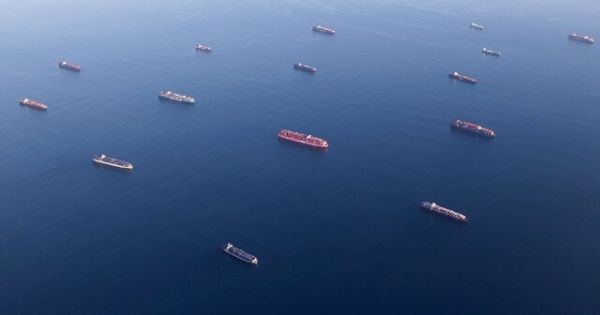Port congestion getting worse as entering 2022 - Sea-Intel
All available data shows that congestion problems are getting worse as we enter 2022 and show no signs of improving, Sea-Intel warns.

Container vessels at Los Angeles and Long Beach ports (Photo: New York Times)
What has been described as "seemingly interminable queues around the world" accounted for 11% of global containership capacity in 2021, while capacity increased at 7%. In normal times, only about 2% of container vessel capacity is forced to wait at ports.
According to data from Korean shipping line HMM, a small improvement could be seen between October and November 2021. In November 2021, 11.5% of container shipping capacity was delayed, compared with 12.3% in October.
However, looking at North America and Europe figures for December 2021 and early 2022, it shows no signs of improving.
A North American port congestion index showed a record high on December 30, 2021, although improved slightly on January 6, 2022 due to better conditions in Savannah and Charleston.
Sea-Intel CEO Alan Murphy said: “For Europe, we see a situation that has been steadily getting worse since the start of October, with no signs of any improvement – or even levelling out."
“This also implies that we might well expect to see a continued upwards push on freight rates on this trade, as the congestion is likely to have a negative impact on reliability, and hence in turn on available capacity.”
According to the analyst, the reliability of the container shipping schedule will reach between 34% and 40% in 2021.
Murphy warned of the future: "All the available data shows that congestion and bottleneck problems are worsening getting into 2022, and there is no indication of improvements as of yet."
Read more:
- Global supply chain disruption expected through 2022
- Congestion at Port of Felixstowe could affect $2.7 billion worth of UK imports
- Growing delays and congestion at ports in the US and Asia
- Using Sea-Air transport mode to avoid congestion which can lead to... more congestion
- Empty containers seriously congested at US West Coast ports when congestion is at a record level
- No signs of improving port congestion in the US, fearing that it will last until the end of 2022
- Container shortages, port congestion and ship delays have pushed freight rates sky-high
Source: Phaata.com (According to Seatrade-Maritime)
Phaata.com - Vietnam's First Global Logistics Marketplace
► Connect Shippers & Logistics companies faster














.png)




.jpg)

